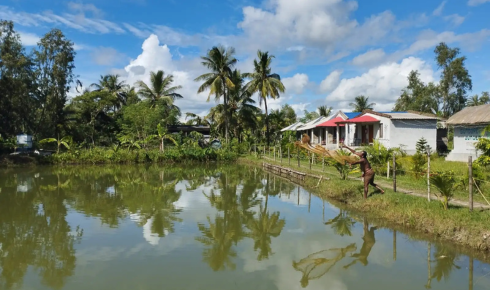A sundarban trip is a journey into the heart of one of the most extraordinary ecosystems on the planet. Situated at the mouth of the Ganges River in West Bengal, India, the Sundarbans is the world’s largest mangrove forest and a UNESCO World Heritage Site. Home to the elusive Royal Bengal Tiger, this region offers an unforgettable blend of adventure, wildlife, and serene natural beauty.
For nature lovers, photographers, bird watchers, and those simply seeking a break from the concrete jungle, the Sundarbans is a dream destination. The raw, untouched charm of its waterways, dense mangroves, and thriving wildlife makes every moment here feel magical.
What Makes a Sundarban Trip So Special?
Unlike traditional vacations, a trip to the Sundarbans is immersive. It’s not about crowded attractions or high-rise hotels—it’s about connecting with nature on a deeper level. You explore by boat, gliding through winding creeks that reveal breathtaking views and rare animal sightings. It’s a place where silence is only broken by the sound of water, bird calls, or the occasional splash of a crocodile or dolphin.
The region is rich in biodiversity, with over 270 bird species, saltwater crocodiles, wild boars, spotted deer, and, of course, the famed Royal Bengal Tiger. Each turn in the waterway holds the possibility of an encounter with nature’s wonders.
Key Attractions During Your Trip
Most Sundarban trip itineraries cover major watchtowers and scenic spots, such as:
- Sajnekhali Watch Tower: A popular place for bird watching and catching a glimpse of the Royal Bengal Tiger.
- Sudhanyakhali Watch Tower: Offers a high chance of spotting crocodiles and deer.
- Dobanki Canopy Walk: A thrilling experience that lets you walk through the forest on an elevated path, offering panoramic views.
- Netidhopani Ruins: A mythologically significant site with the remains of a centuries-old Shiva temple.
- Pirkhali and Panchmukhani Creeks: Ideal for tranquil boat rides and wildlife observation.
These attractions give you a well-rounded taste of the unique landscape and ecological diversity that define the Sundarbans.
Best Time to Plan a Sundarban Trip
The ideal time to visit is from November to March. The weather is cooler and more pleasant, making boat rides and safaris more enjoyable. This period also increases your chances of seeing wildlife, as many animals are more active during the winter months.
The summer season can be hot and humid, while the monsoon (June to September) brings heavy rain, making boat travel difficult and certain areas inaccessible.
Travel Tips for a Safe and Enjoyable Trip
- Carry light cotton clothes, a hat, sunglasses, and insect repellent.
- Always follow the instructions of your guide and forest officials.
- Use eco-friendly products and avoid plastics to protect the environment.
- Keep your camera ready — some of the best moments come unexpectedly.
- Respect the local culture and interact politely with village communities.
Booking the Right Tour
Many travel agencies offer Sundarban tour packages that range from one to three days. These include transportation (usually from Kolkata), accommodation in eco-resorts or boats, all meals, entry permits, and guided tours. For a deeper experience, choose a package that includes cultural performances, local village visits, and night stays in forest lodges or boats.
Before booking, make sure to check reviews, compare itineraries, and confirm what’s included in the package. Choosing a reliable and eco-conscious tour operator ensures a smoother and more meaningful experience.
Conclusion
A Sundarban trip is not just a vacation — it’s a gateway to discovering nature in its purest form. From exploring mysterious mangrove creeks to spotting rare wildlife and experiencing local traditions, the Sundarbans offers a perfect escape into the wild. Whether you’re seeking adventure, relaxation, or a connection with nature, this magical destination promises memories that will last a lifetime.




